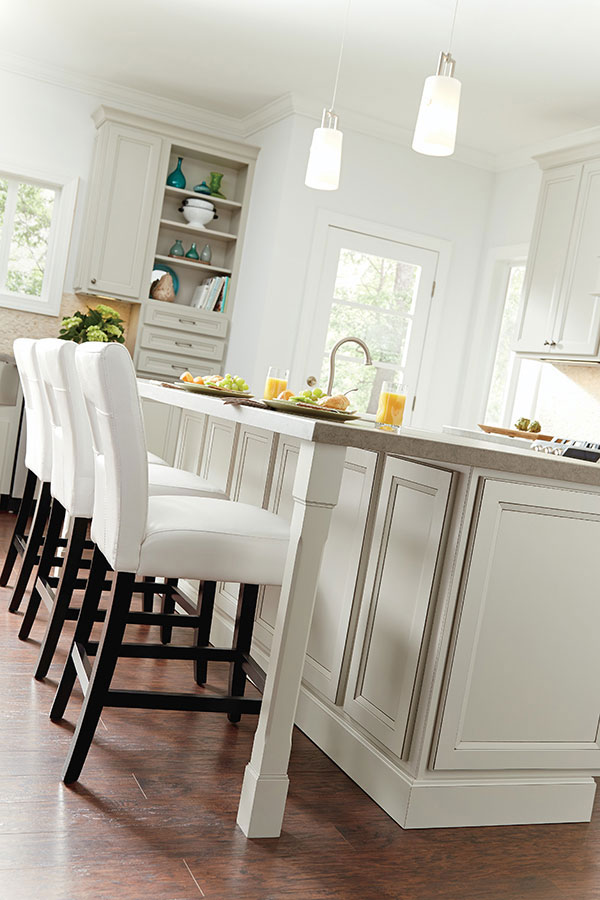Make Your Kitchen Island Stand Out with Custom-made Legs For Kitchen Island
Make Your Kitchen Island Stand Out with Custom-made Legs For Kitchen Island
Blog Article
Necessary Variables to Take Into Consideration When Choosing Legs For Kitchen Area Island
Choosing the suitable legs for a kitchen island entails a mindful evaluation of several factors that can significantly affect both performance and aesthetic appeal. Amongst these, the option of material plays a pivotal function in guaranteeing resilience, while the layout needs to match the existing decor. In addition, factors to consider such as height and weight assistance are necessary for stability and convenience. As we discover these aspects, it becomes clear that each choice can have far-reaching effects for the general cooking area experience. What nuances should be considered in each of these classifications to achieve the suitable balance?
Product Options
When choosing legs for a cooking area island, understanding the different product alternatives is important for attaining both visual appeal and structural honesty (Legs For Kitchen Island). The choice of material substantially affects not just the resilience of the island however additionally its overall design and performance
Metal legs, typically made from stainless steel or wrought iron, contribute a contemporary and industrial feel while guaranteeing sturdiness and stability. These materials are resistant to wear and can sustain significant weight, making them ideal for bigger islands.
An additional alternative is crafted products, like MDF or plywood, which can be extra cost-effective while still providing a range of finishes. They might not supply the same level of security as solid timber or steel. Legs For Kitchen Island. Finally, materials such as acrylic or glass can create a modern look, though they may call for extra support to ensure security.
Inevitably, the choice of material for cooking area island legs must align with the wanted performance and the overall motif of the kitchen.
Design and Style

When thinking about design, the form and surface of the legs are essential. Conical legs can provide a sense of lightness and elegance, while thicker, much more robust legs can communicate stamina and stability. Furthermore, the surface-- be it painted, stained, or natural-- should complement the cabinetry and countertop products to develop a unified appearance.
Additionally, the style of the legs can likewise show personal preference. Personalized or attractive legs, such as those including complex carvings or distinct geometric shapes, can work as centerpieces, adding character and personality to the cooking area. Inevitably, the ideal option will not just improve performance but additionally raise the aesthetic appeal, making the cooking area island a standout function of the home.
Height Factors To Consider
Selecting the ideal height for cooking area island legs is essential, as it straight impacts both performance and comfort. The conventional elevation for a kitchen island commonly ranges from 36 to 42 inches, lining up with usual countertop elevations.

It is also necessary to represent individuals' heights and choices. Customizing the height can guarantee a comfortable experience for all member of the family, making the kitchen island a much more functional and delightful room.
Weight Assistance
Ensuring sufficient weight support for cooking area island legs is vital for both safety and functionality. The kitchen island commonly serves numerous purposes, including food preparation, dining, and added storage space, demanding a robust support framework. When selecting legs, it is crucial to consider the total weight capability called for based on the island's intended use and the products that will be positioned on it.
The selection of product for the legs plays a considerable role in their weight-bearing capabilities. Solid wood, metal, and durable compounds typically offer exceptional stamina compared to lighter materials. Furthermore, the style of the legs-- whether they are right, tapered, or have a pedestal type-- can affect their capability to distribute weight effectively across the framework.
Furthermore, the leg positioning need to be tactically planned to enhance stability. Legs positioned at the edges or with a larger base can much better sustain heavier tons. Always consult the manufacturer's requirements concerning lots restrictions to ensure that the legs can sustain the desired weight without jeopardizing safety. In recap, selecting kitchen area island legs with sufficient weight support is important for developing a practical and secure cooking space.
Installation and Upkeep
Proper installation and maintenance of kitchen island legs are vital for ensuring longevity and stability. my site This often entails safeguarding the legs to the island base using appropriate fasteners, guaranteeing that the legs are level and straightened.
Once set up, regular maintenance is essential to maintain the integrity and look of the legs - Legs For Kitchen Island. For wood legs, routine cleaning with a moist fabric and application of suitable wood polish can avoid moisture damages and keep their surface. Metal legs may call for a mild cleaning service to remove oil and grime, followed by a completely dry towel to avoid rust development
Furthermore, evaluate the legs frequently for indications of wear or damages, such as cracks or loose joints. Tightening screws or screws as needed can also prolong the lifespan of the legs. By sticking to these installment and upkeep practices, house owners can make sure that their cooking area island continues to be tough and aesthetically appealing for many years to find.
Conclusion

Visual comprehensibility is paramount in selecting the style this link and style of legs for a kitchen area island, as these components significantly influence the general atmosphere of the room. Conical legs can give a sense of lightness and beauty, while thicker, a lot more durable legs can communicate toughness and security.Picking the ideal elevation for cooking area island legs is crucial, as it directly impacts both functionality and comfort. In summary, selecting kitchen island legs with adequate weight support is important for creating a functional and safe culinary room.
In verdict, picking legs for a cooking area island demands cautious consideration of different elements, including product alternatives, design, height, weight support, and installation.
Report this page